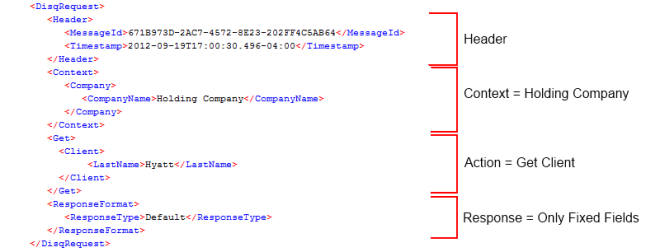Inbound Web Services
FileReceived
The OIPA application provides a web service called AsFile or FileReceived to electronically submit data to the system. The AsFile/FileFeceived web service allows an external system to send data in XML format to OIPA. Based on the client-specific configuration, the data can be transformed, validated, and inserted in the OIPA database followed by processing of related activities.

As the above diagram illustrates, a SOAP message is sent by an external system to the FileReceived web service and includes two parameters: FileID and XML data. FileID identifies the configuration from the AsFile table that will be used for processing and transforming inbound XML to OIPA business entities. Then, the created entities are persisted in the OIPA database. The AsFile configuration may also specify additional processing after the incoming date is stored in the database. Activities will be created and processed as dictated by business requirements for processing electronic submissions into the OIPA application.
At the end of the processing, a SOAP message is sent back to the external caller that includes the result of the processed request. If the processing has been successful, the outcome may also include an output XML constructed based on the provided configuration for the AsFile response.
Integration with external systems, including outgoing calls, is supported through extensions and is discussed later in this document.
DISQ
DISQ provides a simpler, more comprehensive interaction model than FileReceived. DISQ surfaces all of the data and associated operations in a consistent and flexible manner, facilitating any kind of service interaction.
While OIPA provides flexible services with AsFile and ExposedComputation, there is no formal XML schema that defines the input and output parameters for them. The payloads typically consist of a single string, which can be any kind of structured xml data. In contrast, DISQ provides a formal XML schema which describes the data and operations that it exposes. DISQ requires no configuration in order for it to function, beyond normal configuration in the existing system.
A DISQ Request consists of the following parts:
- Header - provides a loose bucket of properties that can help influence the overall processing of the DISQ request.
- Context - identifies the resource that the DISQ request applies to. The Context section of the DISQ allows the caller to specify any combination of fields to uniquely identify the context for the Action.
- Action - identifies the operation to be performed within the context specified.
-
ResponseFormat - identifies the information to be returned as a result of the action being performed.

See the OIPA Web Services document for additional details.
